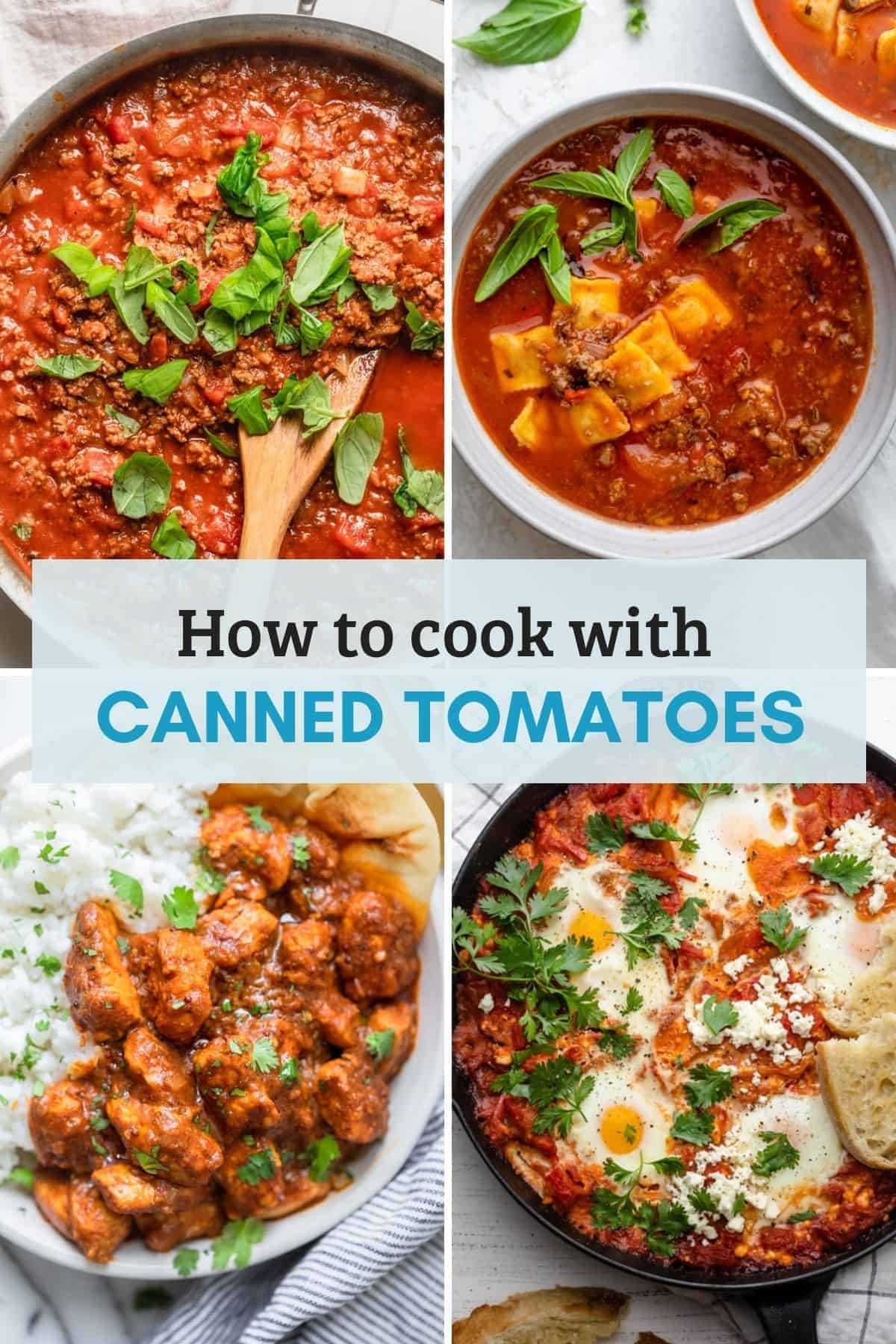This post may contain affiliate links. Please read our disclosure policy.
My site is loaded with all kinds of recipes using canned tomatoes – they are such an essential pantry item. This guide will help you decide which canned tomatoes to use for which recipes and how you can substitute them as necessary. Tomatoes top the ingredient list in recipes for pasta sauce, enchiladas, chili and more.

Table of Contents
Fresh tomatoes are at their peak for only about five months a year. So by default, I overwhelmingly reach for easy-to-use canned tomatoes. The world’s most popular vegetable – which is technically a fruit – tomatoes supply vitamins C, A, and B, iron, and lycopene – an antioxidant that protects cells. Read along for my guide on which can of tomatoes is best for whatever you want to make.
Facts about canned tomatoes
- Roma or San Marzano are the two common varieties of tomatoes that go into cans. They are the smaller, egg-shaped plum tomatoes, not the big, round garden ones usually sliced for sandwiches or salads.
- Canned tomatoes are full flavor. Supermarket tomatoes are picked before fully ripe. Canned tomatoes, however, ripen on the vine and are then rushed to processing within a few hours.
- There is more lycopene in canned versus fresh tomatoes. Lycopene is a naturally occurring chemical that makes red foods red. It is an antioxidant that protects cells from damage and is higher in cooked tomatoes.
- All canned tomatoes are briefly heated/cooked during processing. This is part of their sterilization process that actually cooks the tomatoes right in the can.
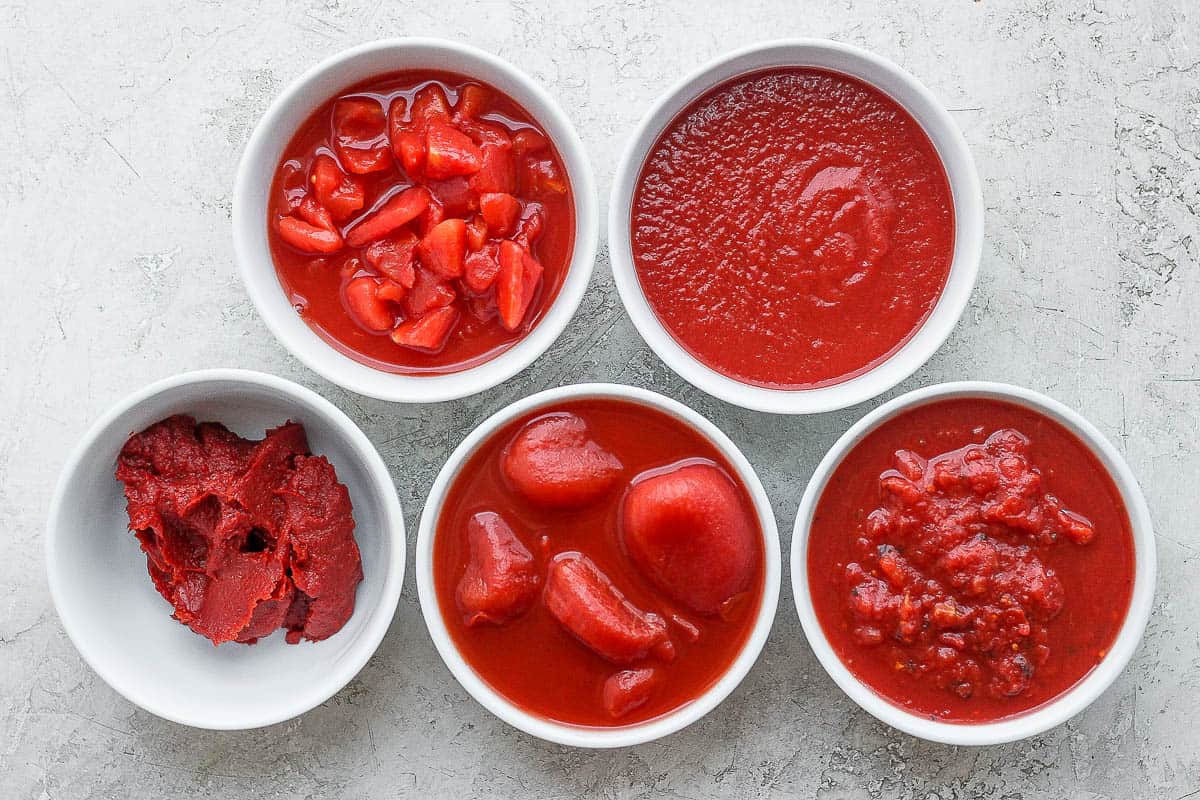
Types and uses of canned tomatoes
Which canned tomato is right for your recipe? It all comes down to texture and flavor.
- Growers reserve their best tomatoes for whole peeled canned tomatoes, which, time permitting, can be cut or pureed into any shape. Use for the best taste.
- Choose crushed tomatoes or tomato sauce for pasta sauces or pizza sauce where a silky-smooth consistency is desired and you want your sauce done fast.
- Looking for nice bits of tomato throughout a stew or soup? Diced tomatoes are right for you.
- Tomato paste adds a hint of tomato flavor to stews, and also helps thicken pasta sauces.
Whole peeled tomatoes
Overview
To make whole peeled tomatoes, tomatoes are skinned, tomato juice or puree is added, and then the can is briefly heated to destroy the microorganisms that make food to go bad. It’s important to read to label. Some whole peeled tomatoes will only have two ingredients, tomatoes and tomato juice or puree. Most brands also add salt, and others add citric acid, a natural preservative, and calcium chloride, a compound that helps the vegetable maintain its shape. Tomatoes processed without calcium chloride will cook down faster.
Lots of canned tomatoes, especially whole peeled, include the words, “San Marzano.” San Marzano refers both to a type of tomato and place in Italy where they are commonly grown. Whole peeled tomatoes are incredibly versatile. They cook down well and can be pureed or chopped for a variety of uses. Some have basil added, but I have never found the flavor overpowering.
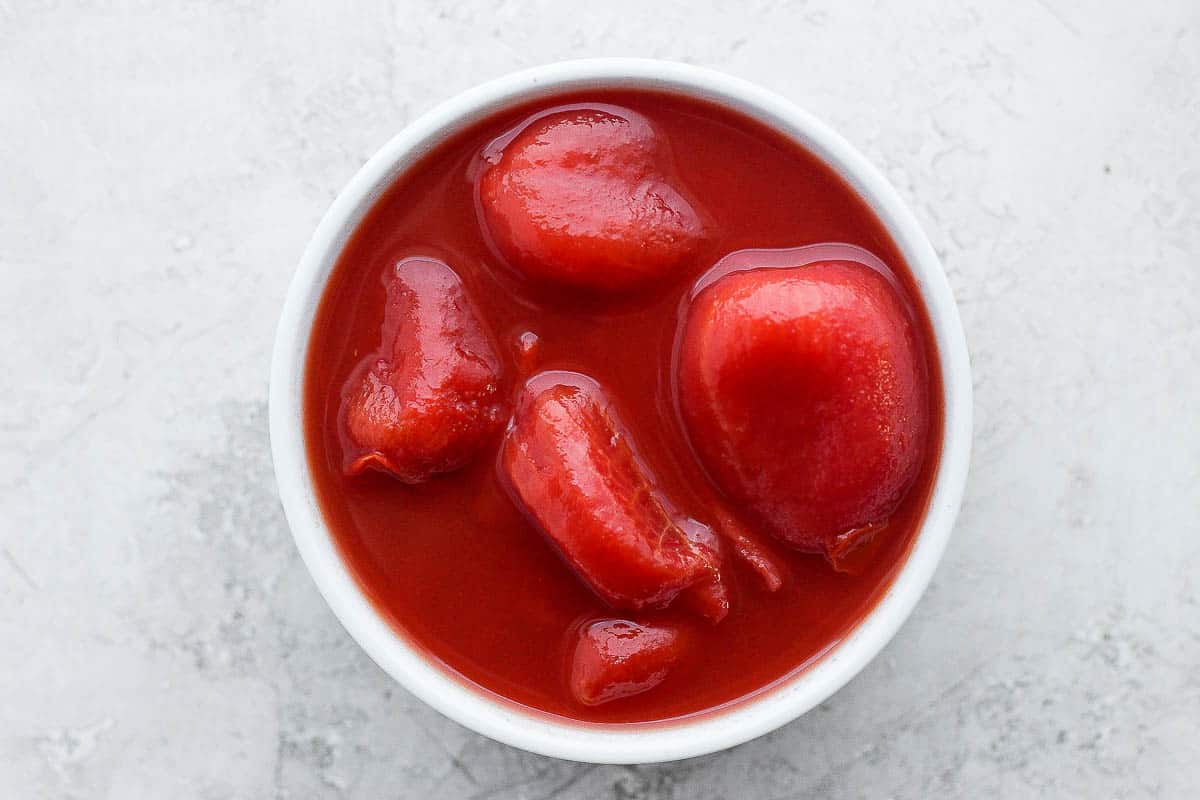
Recipes with whole peeled tomatoes
Diced tomatoes
Overview
Diced tomatoes are processed the same way as whole peeled but always expect them to include the form-saving ingredient calcium chloride. For this reason, they do not break down as easily when cooked, especially since each little tomato piece has been exposed to calcium chloride. This is desirable when you want a heftier tomato presence in stews, but not ideal when you are going for a smooth sauce,
Many diced canned tomatoes come with added flavors like garlic, herbs, chipotle, or lime. I prefer to add my own seasonings. Do not confuse plain diced tomatoes with stewed tomatoes which have been cooked longer and have more ingredients. I prefer not to purchase stewed tomatoes to limit the processing.
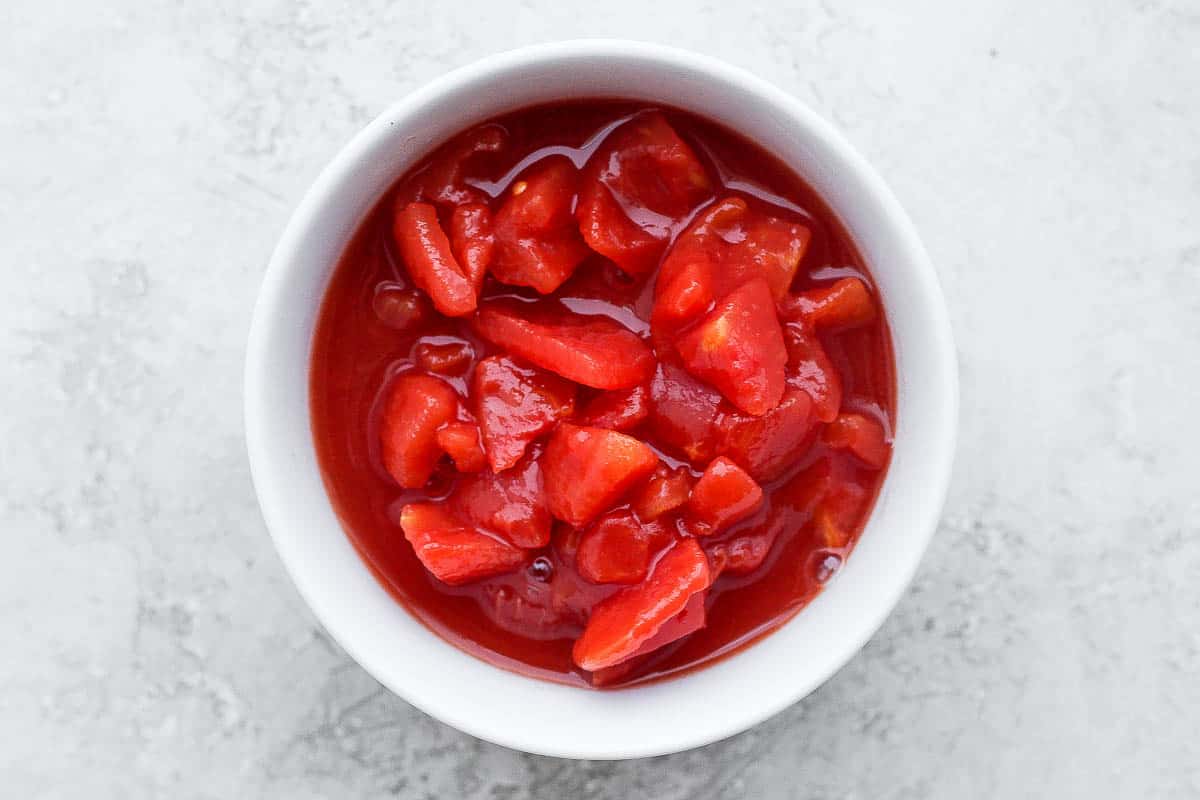
Recipes with diced tomatoes
- Traditional Shakshuka Recipe
- Shakshuka with Feta
- Cauliflower Curry
- Vegetarian Tortilla Soup
- Vegan Creamy Tomato Pasta
- Pasta Bolognese
- Vegetarian Minestrone Soup
- Classic Ratatouille
- Sweet Potato Chili
- Spaghetti and Meatballs in Marinara Sauce
- Spaghetti Squash Lasagna
- Baked Spaghetti Recipe
Crushed tomatoes
Overview
Crushed tomatoes have the consistency of a slightly chunky sauce. Depending on the brand, you might find crushed tomatoes to be crushed whole or skinned first. The ingredient list might be just tomatoes or tomatoes and tomato puree. When you are going for a quick sauce, crushed tomatoes are ideal. Pureed tomatoes are very close in texture but I do not use them. Since the tomato does not have to remain whole, many brands omit the calcium chloride.

Recipes with crushed tomatoes
Tomato sauce
Overview
Tomato sauce is a smooth, cooked sauce usually made from tomato puree and spices. Always check the label because the spices can vary and some brands (like Whole Foods 365 Everyday Value brand, actually add sugar!). Canned tomato sauce is the perfect starting point for pizza sauce and is often an ingredient in meatloaf or baked beans.
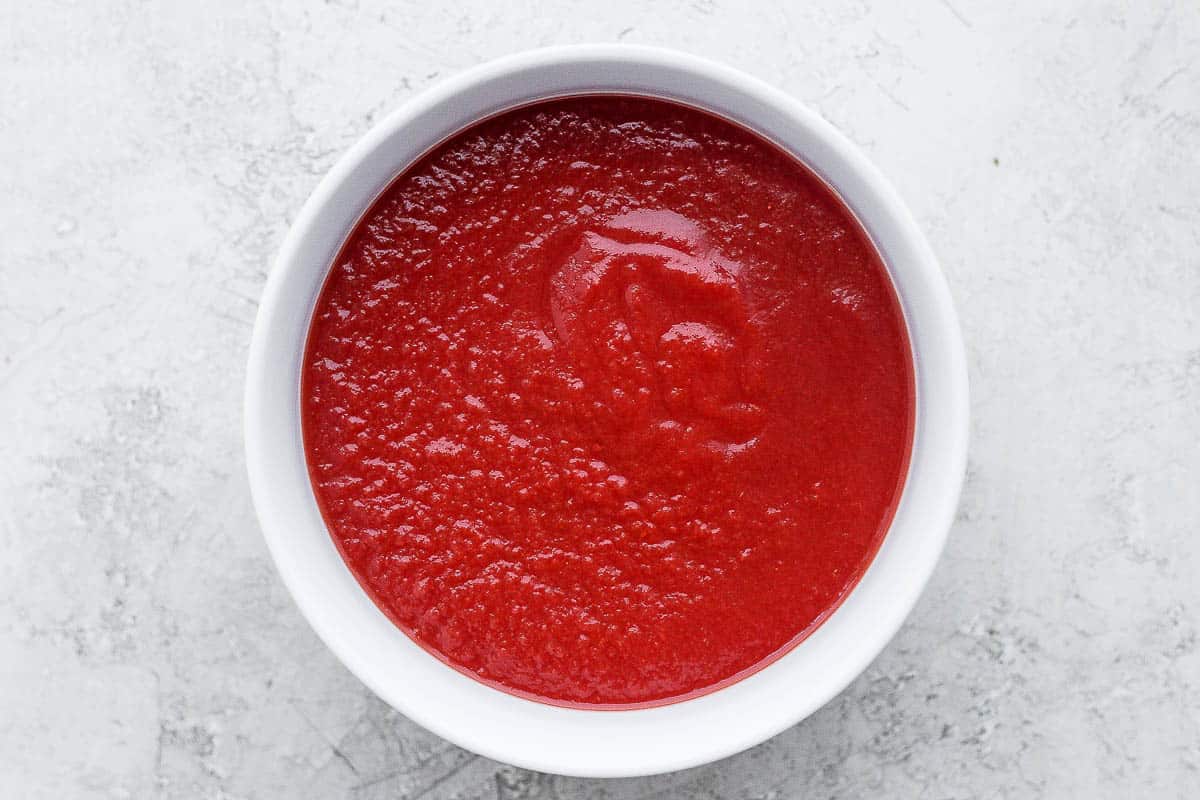
Recipes with tomato sauce
- Grilled pizza
- Chicken Meatballs with Marinara
- Baked Pasta with Ground Turkey
- Portobello Mushrooms Pizza
- Broccoli Pizza Crust
- Quinoa Stuffed Zucchini Boats
- Beef Stuffed Peppers
Tomato paste
Overview
Canned (also sold in tubes) tomato paste contributes a very concentrated tomato flavor to dishes. It is made from pureed tomatoes cooked down at least by half and strained. Tomato paste intensifies the tomato flavors in recipes and can also be a thickening agent in sauces. Thinned with water, tomato paste can substitute for tomato sauce.
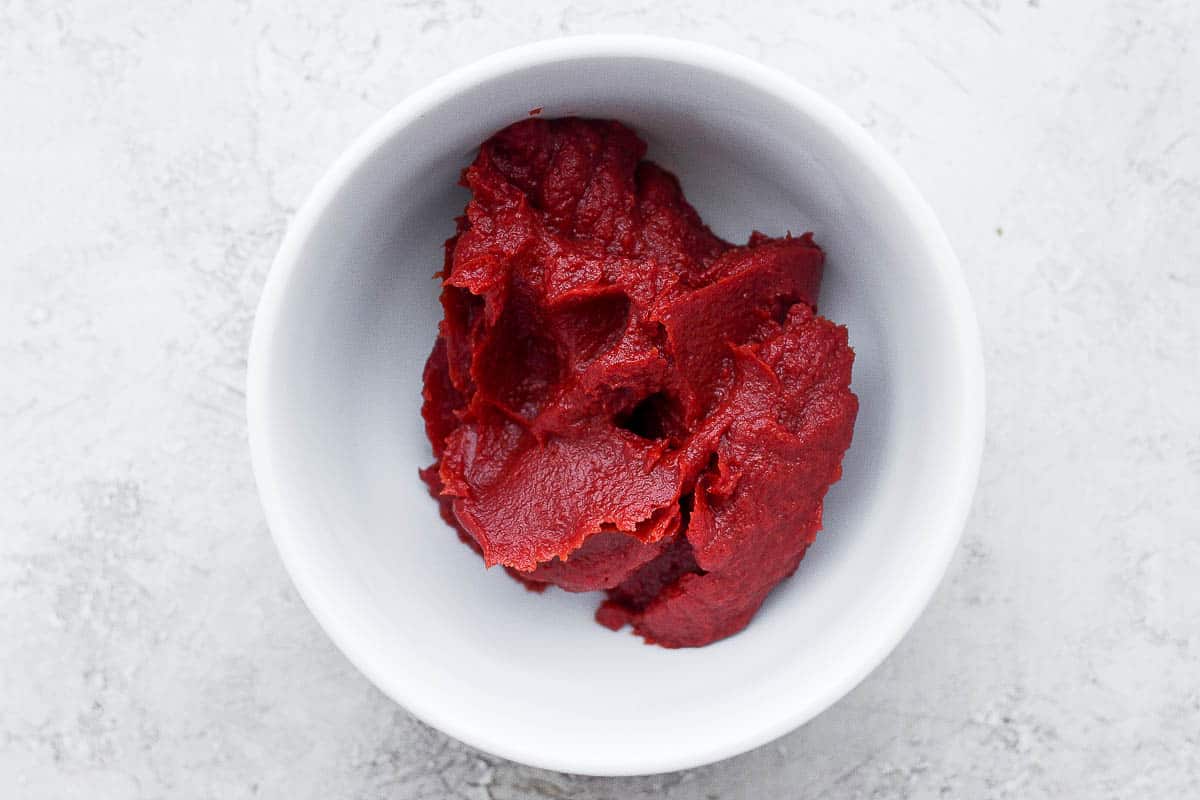
Recipes with tomato paste
- Bulgur pilaf
- West African peanut soup
- Homemade lasagna
- Lebanese Stuffed Squash (Kousa)
- Tomato Brown Rice Pilaf
- West African Beef Kabobs
- Vegetarian Shepherd’s Pie
- Vegetarian Quinoa Stuffed Peppers
- This Okra Stew
- Shish Tawook
- Vegetarian Quinoa Stuffed Peppers
- Easy Butter Chicken
Frequently asked questions
Twelve to 18 months only. The natural acidity of tomatoes is enhanced by canning and gives them a shorter shelf life than say, canned beans.
Yes, but get out your chopping block and knife and be aware that some varieties of garden tomatoes have a higher water and seed content than the meatier Roma types used in canning. Fresh tomatoes might cook down differently. Also, most canned tomatoes are first skinned, which can be a laborious process. Generally, two pound of fresh tomatoes go into a 28-ounce size can of tomatoes.
I recommend storing any leftovers in airtight storage containers – plastic or glass. They will last five to seven days in the refrigerator.
Yes! Just make sure you have enclosed the tomatoes in freezer safe containers with as little air as possible. They should be nice for up to three months.
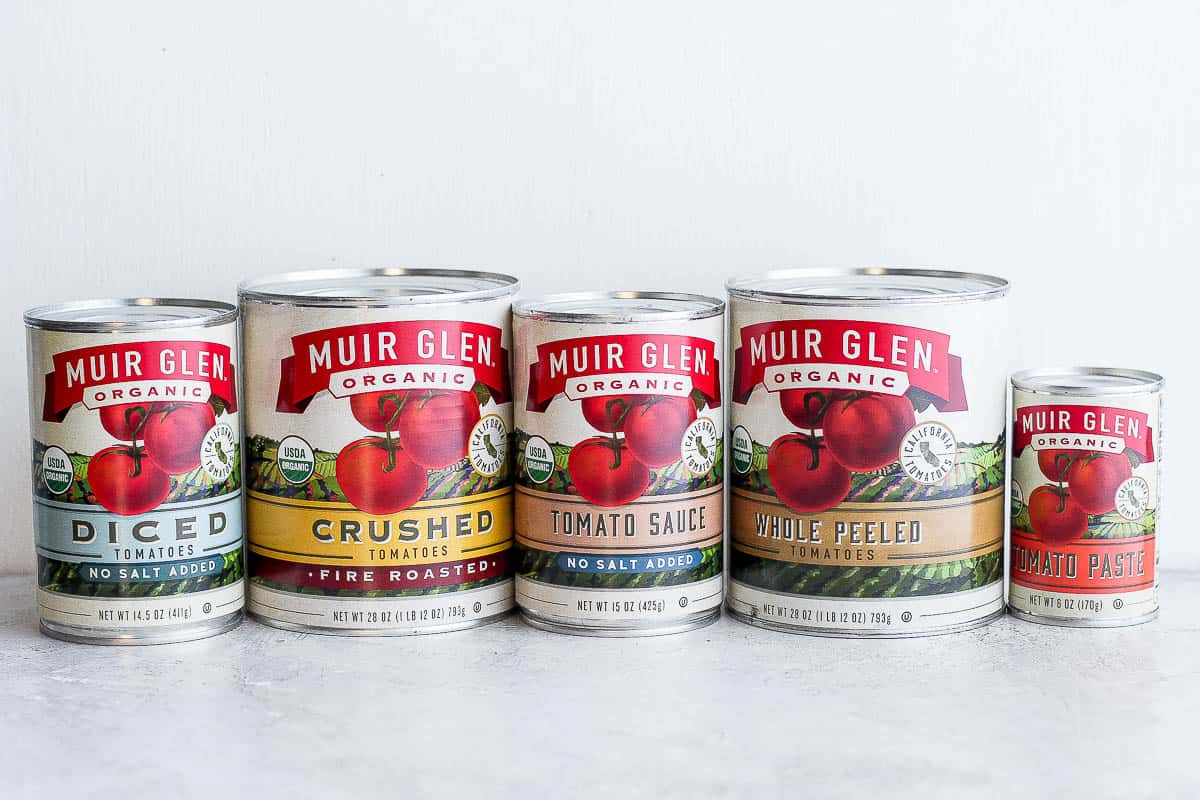
For more helpful cooking resources:
- How to Stock your Pantry
- How to Stock your Freezer
- 16 Pantry Meal Ideas
- 15 Easy No Bake Desserts
- 10 Recipes with Vegetable Broth
- Daily Breakfast Ideas to Stay Healthy
Especially when pantry meals are a necessity, canned tomatoes meet the challenge of a flavorful nutritious staple. How will you use yours today?
If you try any of these recipes with canned tomatoes or have more suggestions for easy pantry meals, I’d love to hear from you! And if you snapped some shots, share it with me on Instagram so I can repost on my stories!
